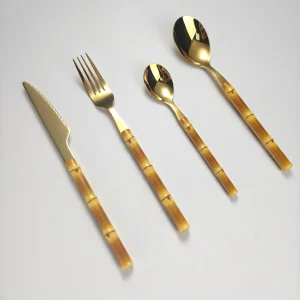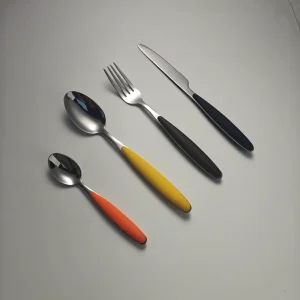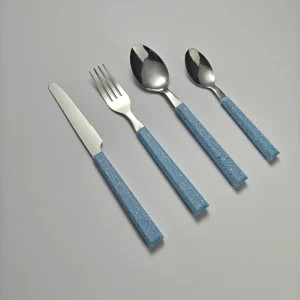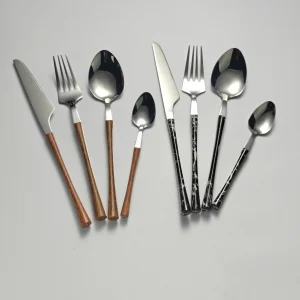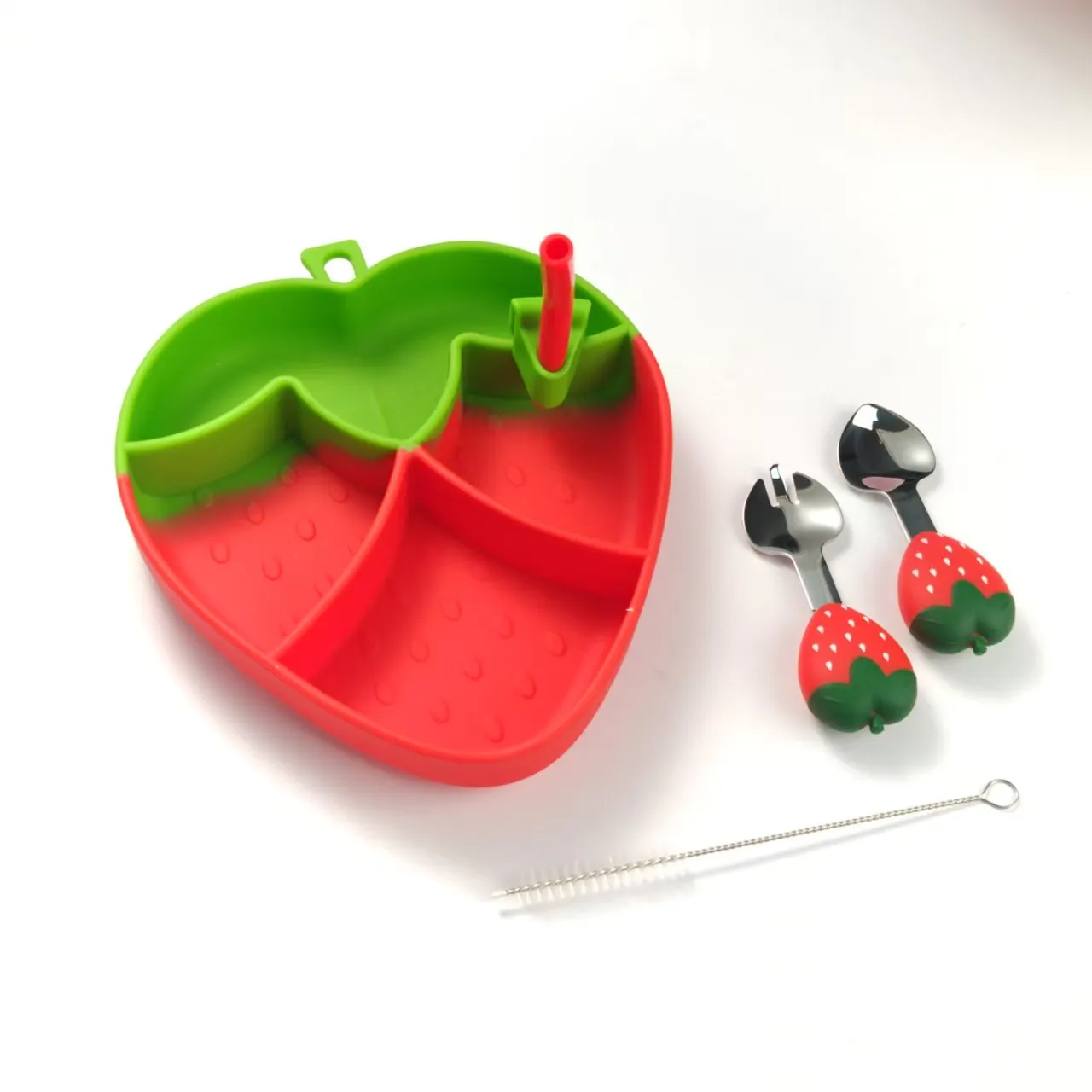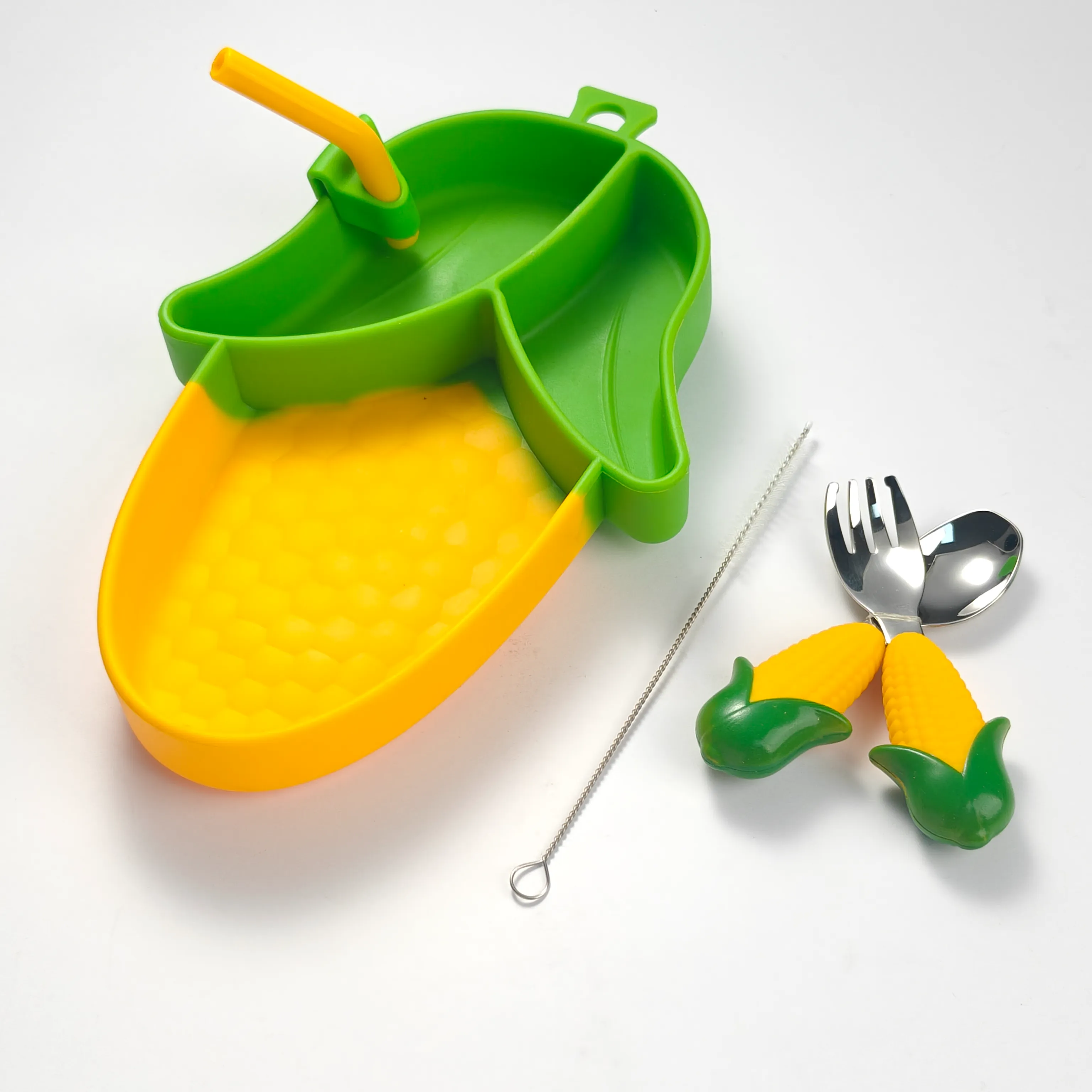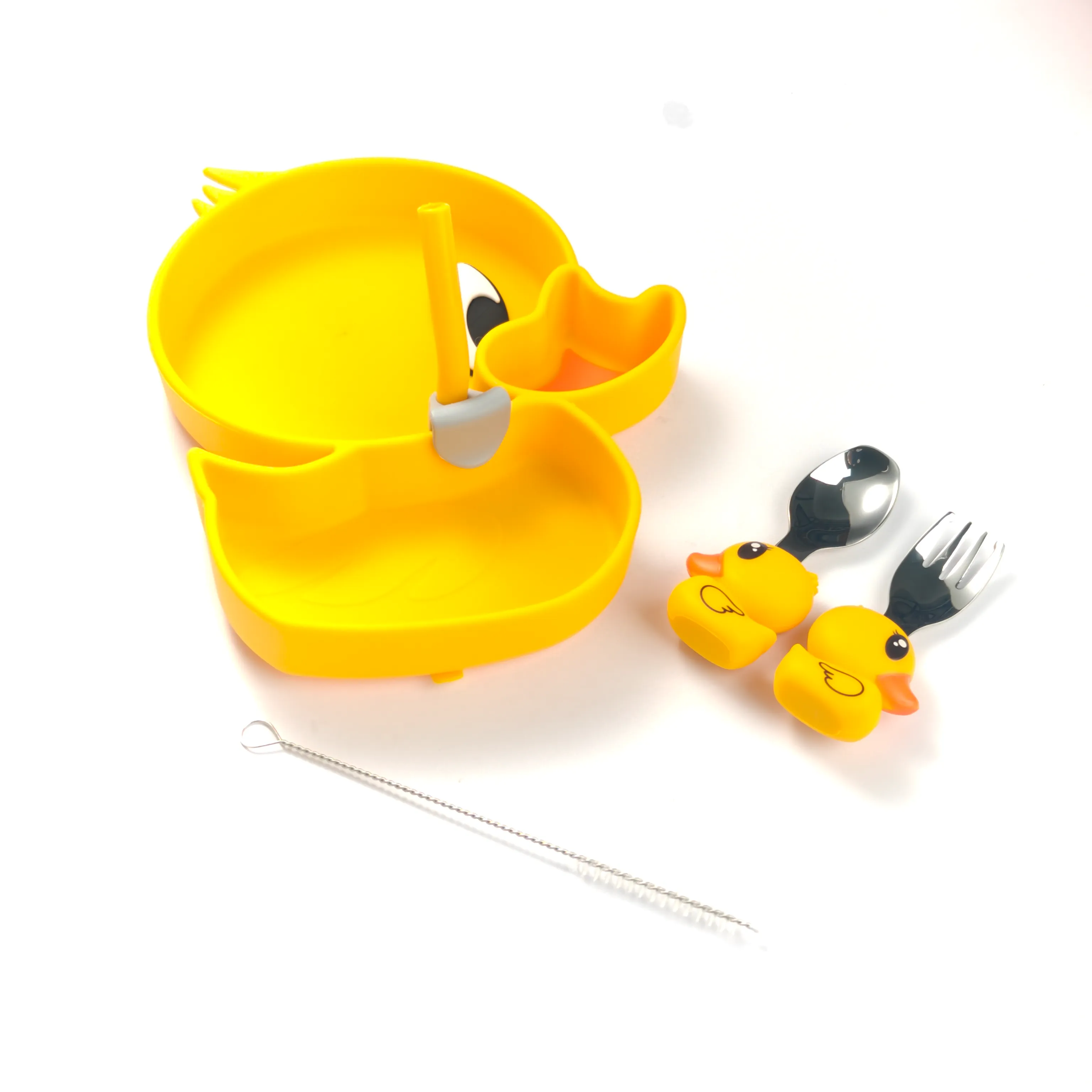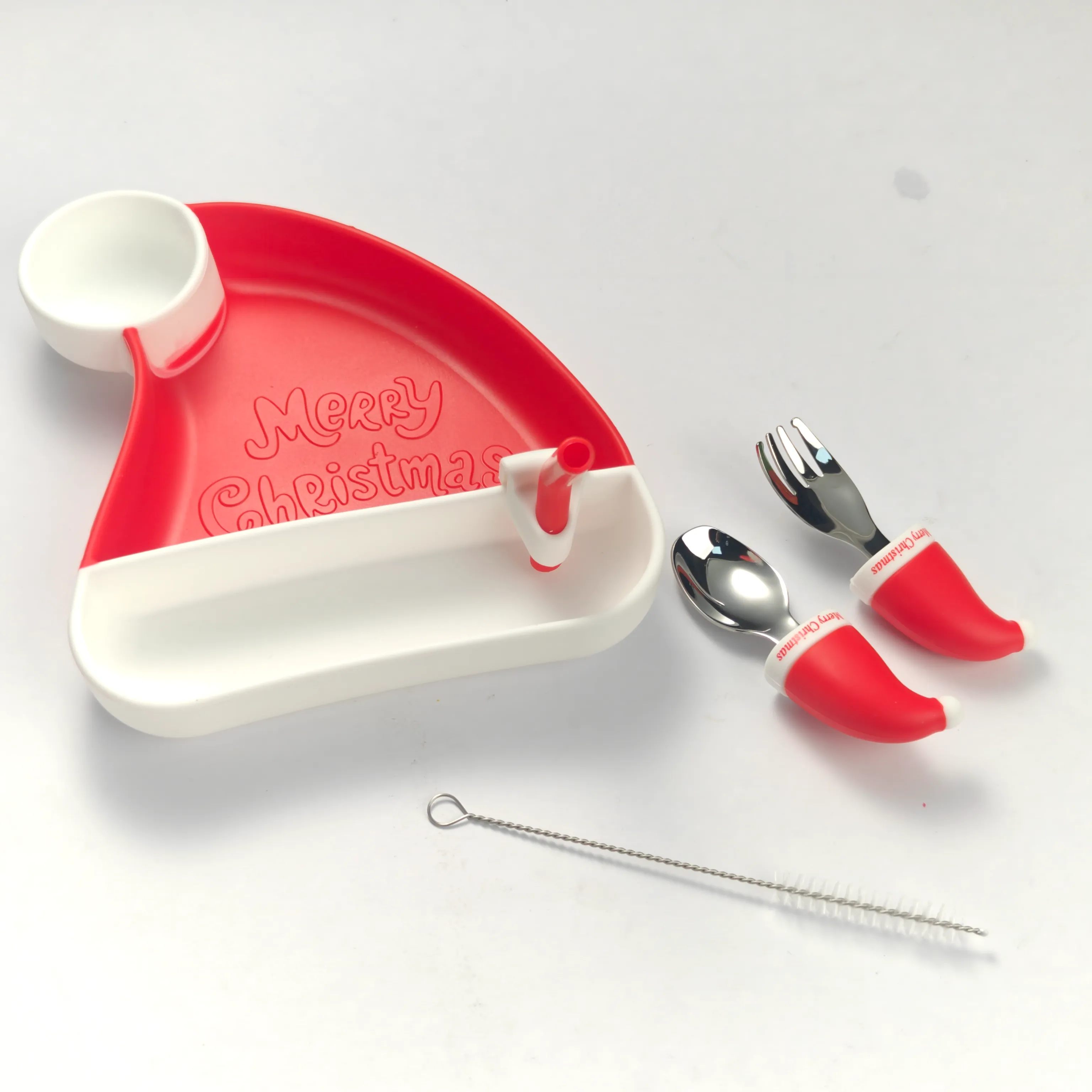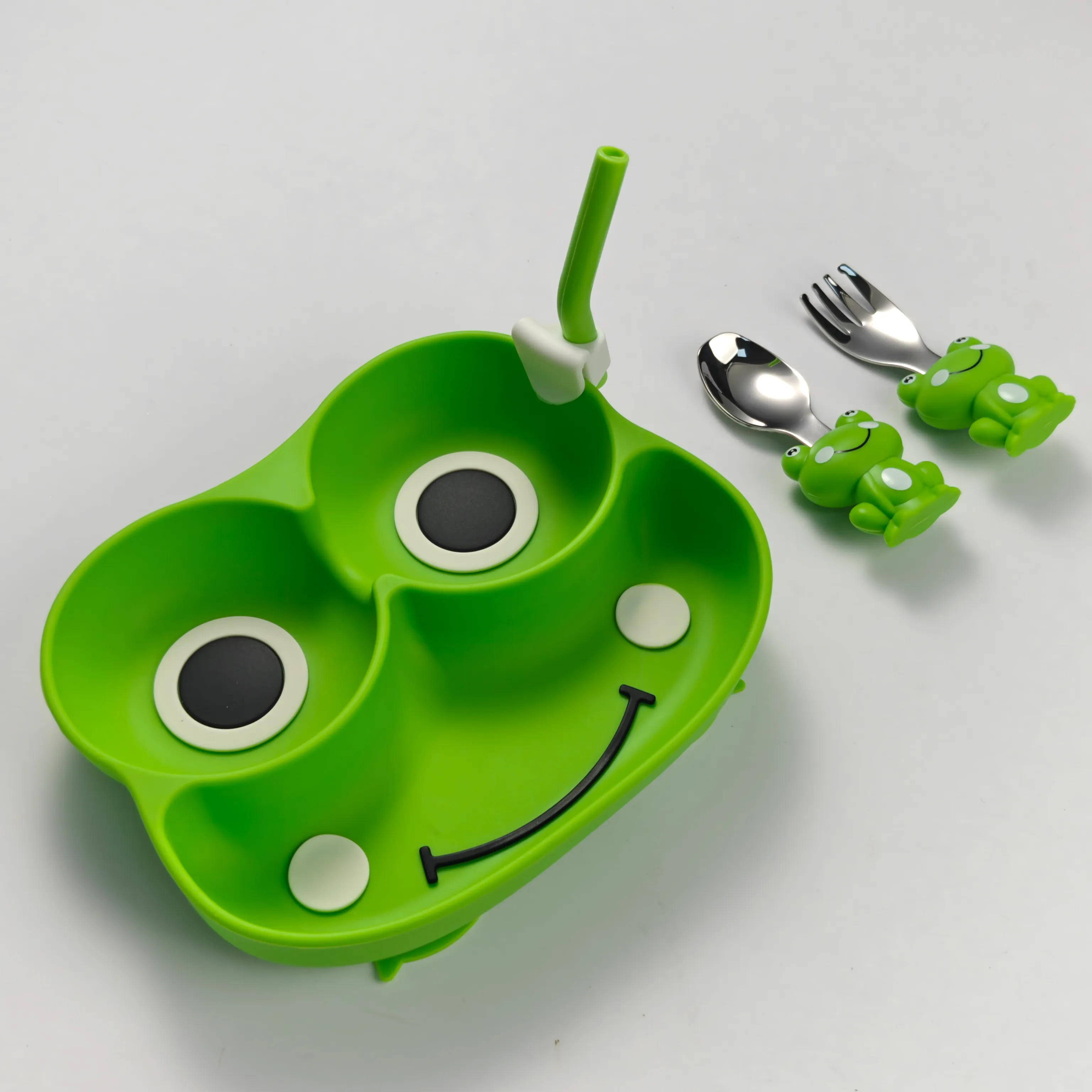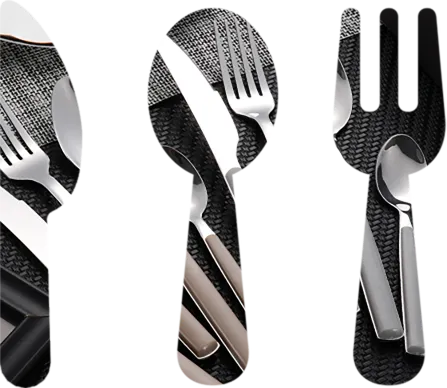Introduction
The gleam of stainless steel flatware has always been associated with grace, cleanliness, and fine dining. Nevertheless, over time, even the best utensils can lose their original brilliance due to scratches, water spots, and exposure to everyday wear and tear. For homeowners, hospitality providers, and professional chefs, it is necessary to learn how to polish stainless steel flatware so that its appearance as well as longevity can be maintained.
This guide explores why polishing matters, the common polishing methods used in the flatware industry, the professional process flow, and maintenance tips that ensure your tableware remains timelessly elegant. Drawing from industry expertise and Huashun’s 20+ years of manufacturing experience, you’ll also learn what distinguishes truly high-quality flatware from ordinary options.
Why Is It Important to Polish Stainless Steel Flatware?
Polishing is so much more than a mere cosmetic exercise—it dictates the usability, hygiene, and brand reputation of stainless steel cutlery.
- Visual Aesthetic Appeal
Mirror finish instantly conveys cleanliness and luxury. In fine dining or hospitality, consumers inherently associate high gloss with higher value. - Improved Hygiene
Smooth, polished surfaces don’t trap food particles or bacteria as readily. It is simpler to clean, with long-term safety assured. - Enhancing Corrosion Resistance
Polishing eliminates tiny defects that would otherwise creep with water and initiate rust spots. Proper finishing enhances longevity in wet or heavily abused applications. - Emphasizing Brand Quality
Restaurants and hotels often choose polished flatware to enhance the dining experience. To suppliers, dependable capability to polish stainless steel flatware is a demonstration of expertise.
Research verifies that well-polished stainless steel resists scratches and staining for 35% longer than the unpolished variety, vouching for the direct relationship of luster and purpose.
Familiar Methods to Polish Stainless Steel Flatware
Different methods of polishing produce different optical and tactile looks. Depending on the intended use situation—household, restaurant, or upscale catering—manufacturers select methods of polishing in synchrony with design goals.
Mechanical Polishing
The most popular process, mechanical polishing applies abrasive wheels, pastes, and several frictions to level the surface. It is very efficient in mass production and can create both mirror and satin finishes.
Example: Huashun applies multi-step mechanical polishing on its flatware lines so that each item can get an even reflective effect.
Brushed Polishing
Brushed polishing creates refined, smooth lines on the surface, giving the flatware a matte, contemporary look. This style is gaining favor in restaurants today seeking clean styles.
Data Point: Marketplace research finds that brushed stainless steel flatware accounts for nearly 40% of current flatware sales for upscale casual chains.
Electrolytic polishing uses electrochemical processes to dissolve away surface imperfections. It produces a very smooth finish, improves corrosion resistance, and is applied frequently on medical-grade or precision knife work. While it is more costly, the cleanliness is unmatched.
Chemical Polishing
Chemical polishing relies on acid-based chemicals to smooth out microscopic scratches and burrs. It is ideal for complex designs where mechanical polishing cannot reach. It requires careful handling in order not to cause uneven finish.
By being aware of these alternatives, customers and businesses can choose the right method to polish stainless steel flatware based on their own needs.
The Polishing Process of Stainless Steel Flatware
Manufacturing flatware manufacturers follow a step-by-step process in order to maintain quality and uniformity.
- First Grinding
Burrs, welding marks, and sharp edges are eliminated using coarse wheels or belts. This lays the groundwork for a smooth surface. - Intermediary Polishing
Medium abrasives form, edges, and transition zones to achieve an equilibrium texture. - Fine Polishing
Cloth wheels and polishing waxes produce a mirror or matte finish depending on customer requirements. This is where the product truly excels. - Surface Treatments
Advanced techniques such as titanium plating, electrophoresis, or PVD coating are applied to achieve gold, black, or rainbow finishes and wear resistance. - Cleaning and Inspection
Ultrasonic cleaning of any excess polishing paste. Each item is inspected carefully for even shine and smoothness. - Packaging
Finished flatware is packaged in scratch-resistant layers to prevent scratches during transit to customers worldwide.
This systematic approach to carrying out activities ensures that when manufacturers polish stainless steel flatware, the final-product is not only pleasing to the eye but also functional for a long time.
How to Judge the Quality of Polished Flatware
In purchasing flatware, especially in wholesale purchase, it is crucial to be able to recognize the quality polishing versus inferior finishing.
- Visual Check: A good flatware product should uniformly reflect light without scratch marks or whitish patches.
- Touch Test: Smooth surfaces with no sharp edges have signs of meticulous polishing.
- Color Consistency: Sets are consistent in gloss or brushed finishes between batches.
- Durability Test: Flatware must be well-polished to be resistant to fingerprints and water marks.
- Mirror Reflection: Hold it up to direct light—high-quality polished flatware will reflect sharply, nearly like a mirror.
Professional buyers prefer requesting samples in advance to examine these features. Huashun gives free samples so that the customers can touch and see the difference before they commit in bulk.
Care Tips to Keep Shiny Flatware Shiny
Good polishing should be taken care of. By following these tips, you can extend the shine of your flatware:
- Spontaneous Cleaning
Clean flatware right after use in order not to leave food acids and oils behind to mark the surface. - Eschew Harsh Tools
Avoid scrubbing with steel wool or abrasive sponges, which will scratch the shining layer. - Employ Mild Cleaners
Neutral dish soap and warm water are enough for everyday cleaning. For more intense shine, apply a stainless steel care agent. - Dry Carefully
Air drying tends to leave watermarks. Instead, hand-dry using a soft cloth in order to maintain gloss. - Polishing Cloths
Polish with microfiber polishing cloths regularly to restore the shine between cleanings. - Storage
Keep flatware stored in protective cases or lined drawer to avoid friction marks from stacking.
These steps will make results last much longer after you polish stainless steel flatware at home or in a pro kitchen.
Conclusion
Polishing stainless steel flatware is a mandatory process that not only determines its shine but also hygiene, durability, and overall dining attractiveness. Be it mechanical or electrolytic processes, each of them has a unique function. For consumers, the determination of the quality of polish assures long-term investment, whereas for customers, regular maintenance ensures brilliance for years.
Whether storing flatware in the home or sourcing bulk orders for restaurants, the answer is in choosing reliable solutions. And when professional know-how is called for, Huashun provides manufacturing excellence you can trust.
About Huashun
Huashun is a trusty flatware manufacturer and food storage containers supplier in Jieyang, China. With 1,000 square meters and more than 20 years of experience, Huashun is interested in wholesaling flatware, children’s dinnerware, kitchen utensils, and food storage containers.
We have 200+ designs and ship to over 30 countries around the world. What sets Huashun apart is our focus on long-term relationships rather than transactions. By combining eternal quality with reliable service, Huashun ensures every piece—from design to polish—surpasses international standards for strength and beauty.
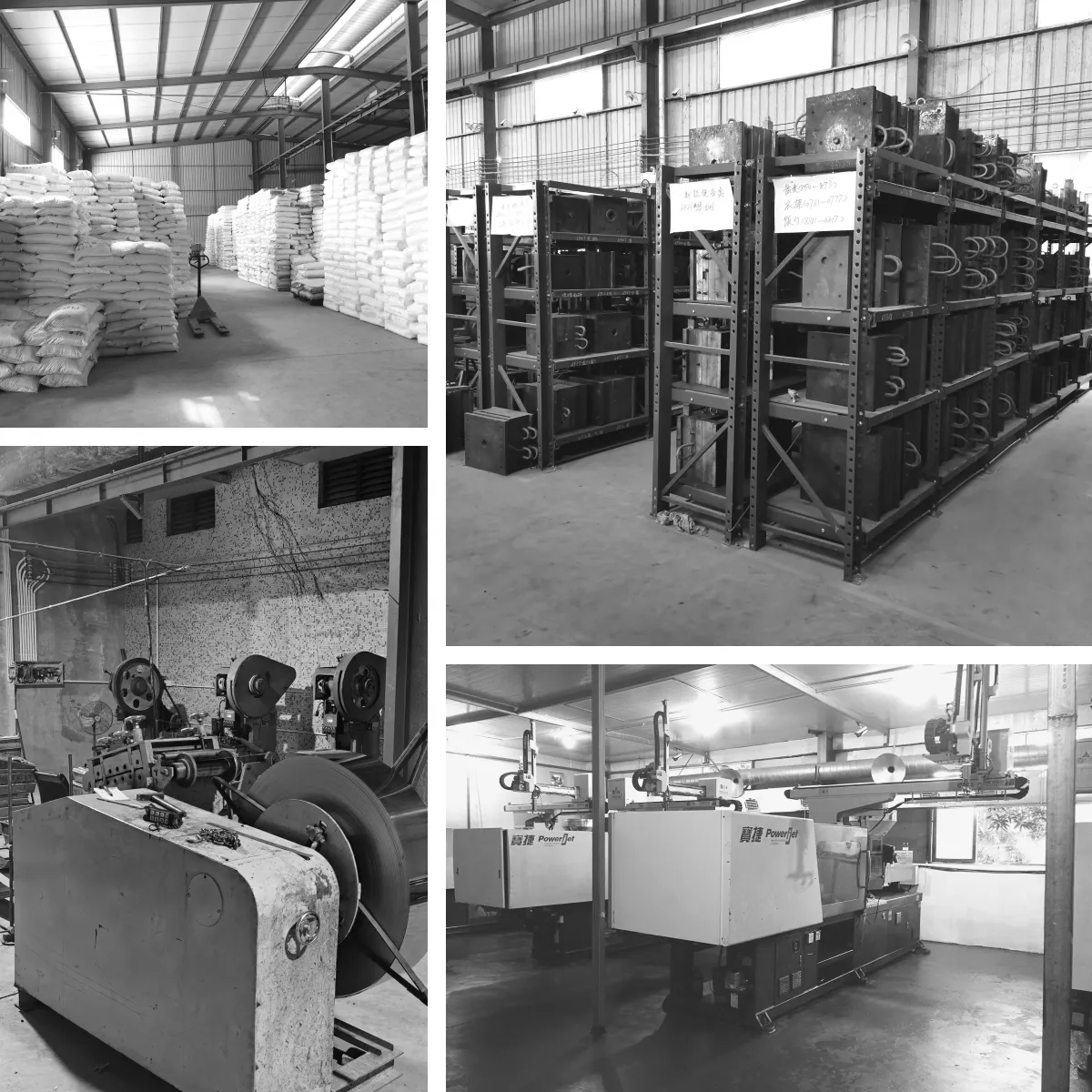
FAQ
How often should you polish stainless steel flatware?
For home use, polishing 2–3 months is enough. At restaurants, monthly polishing gives maximum brightness.
Can I polish stainless steel flatware at home without any special equipment?
Yes. Mild cleaner, soft polishing cloth, and repeated drying are generally sufficient. For serious scratches, however, professional polishing is recommended.
Does polishing decrease the durability of flatware?
Yes—certainly. If you properly polish stainless steel flatware, you are getting rid of defects that lead to rust, so you’re actually prolonging the life of your cutlery.
Brushed and mirror polishing—what’s the difference?
Mirror polishing produces a shiny, reflective finish, whereas brushed polishing gives a flat, textured appearance. The choice will be a matter of style and use demands.
Why use Huashun stainless steel flatware?
Huashun combines decades of craftsmanship, state-of-the-art polishing equipment, and strict quality inspection to deliver flatware that harmoniously integrates beauty with long-lasting strength.
